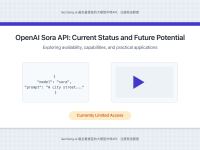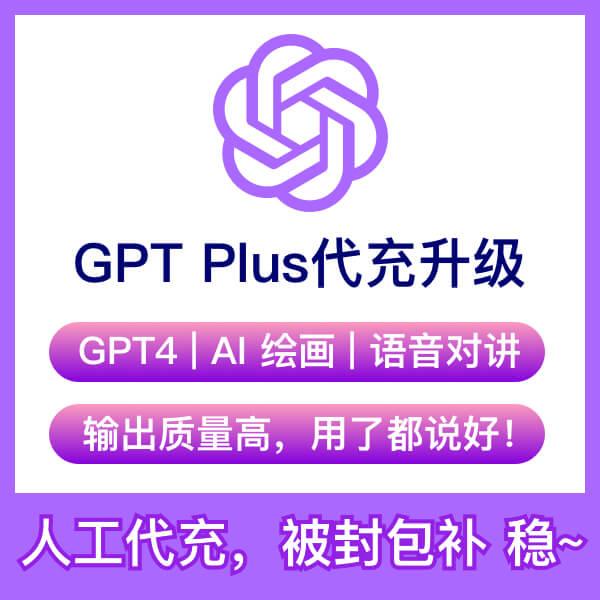Ultimate Guide to AI Video APIs in 2025: Features, Pricing and Integration
AI-powered video generation has revolutionized content creation, allowing developers to transform text prompts or images into high-quality videos within minutes. In this comprehensive guide, we explore the leading AI Video APIs in 2025, their capabilities, integration methods, and how to access them affordably through specialized API hubs.
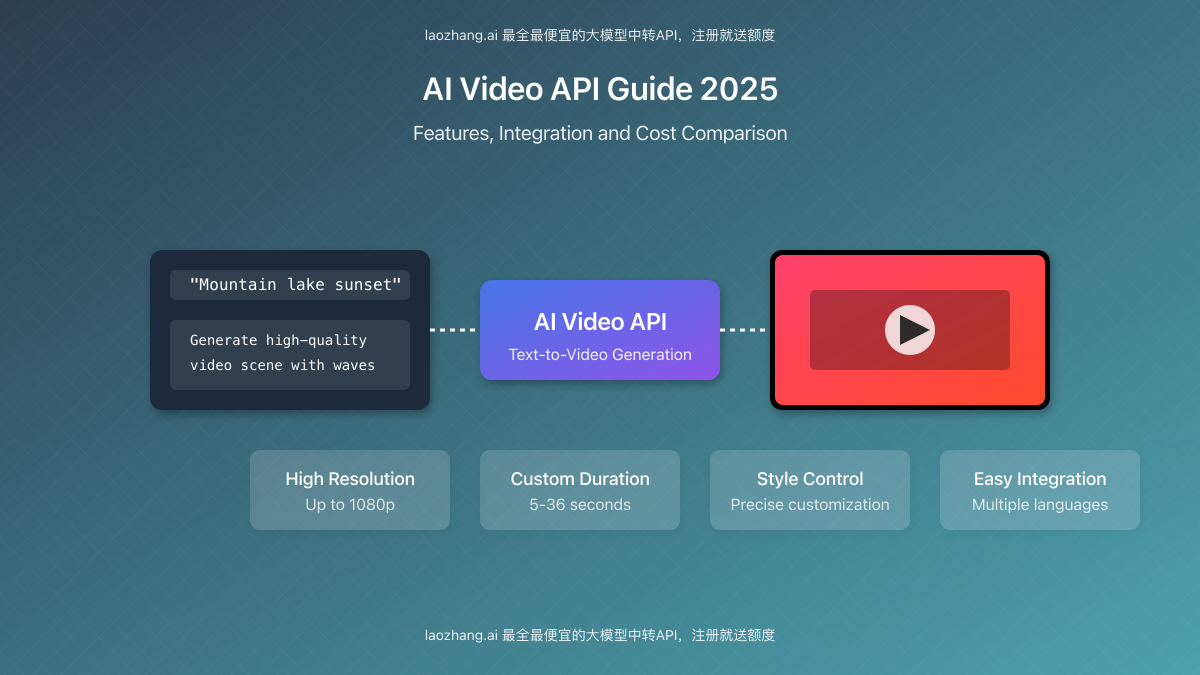
Top AI Video APIs in 2025: A Comparison
The AI video generation market has expanded significantly, with several major players offering robust APIs. Let’s compare the most powerful options available today:
| API Provider | Max Duration | Resolution | Input Types | Pricing (Base) |
|---|---|---|---|---|
| Google Veo 2 | 5-8 seconds | 720p (24fps) | Text, Image | $0.10-0.30/video |
| Luma Dream Machine | 12 seconds | 1080p (30fps) | Text, Image | $0.25/video |
| AI Video API Hub | 36 seconds | 720p (24fps) | Text, Image | $0.10/video |
| RunwayML Gen-4 | 18 seconds | 1080p (30fps) | Text, Image, Video | $0.20/second |
| Tavus API | 60 seconds | 1080p (30fps) | Text, Avatar | $0.50/video |
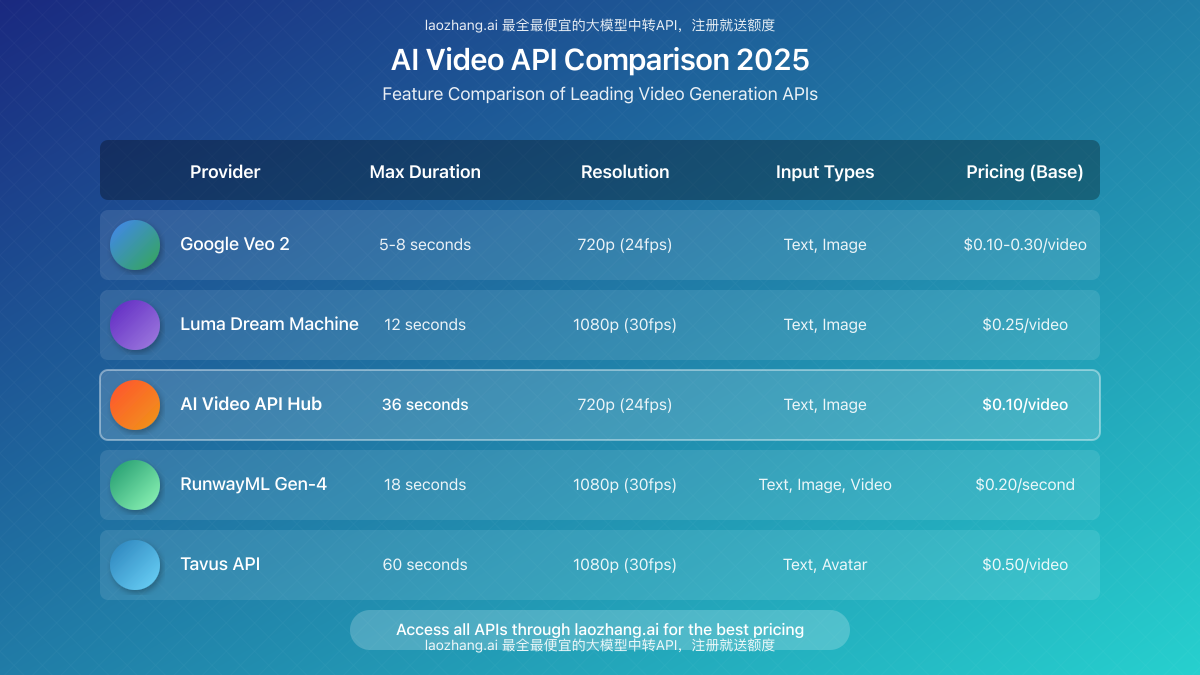
How AI Video Generation APIs Work
AI video generation involves complex deep learning models that translate text or image inputs into coherent video sequences. The typical workflow includes:
- Input Processing: The API parses your text prompt or analyzes input images
- Scene Planning: AI determines scene composition, camera movements, and transitions
- Frame Generation: Models generate individual frames with consistent style and content
- Motion Synthesis: AI creates smooth motion between frames
- Post-processing: The system applies quality enhancements, stabilization, and watermarking
- Delivery: Completed video is made available via download URL or webhook

Key Features to Look for in AI Video APIs
When selecting an AI Video API for your project, consider these essential features:
- Video Length: Maximum duration ranges from 5-60 seconds depending on the provider
- Resolution Options: Higher-end APIs offer up to 4K resolution
- Aspect Ratio Control: Support for landscape (16:9), portrait (9:16), and square formats
- Input Flexibility: Ability to generate from text, images, or existing videos
- Style Control: Granular control over visual style, lighting, camera movements
- Character Generation: Safe generation of human characters with ethical controls
- Watermarking: Transparent or optional watermarking for generated content
- Webhook Support: Real-time notifications when generation completes
- API Reliability: Uptime guarantees and queue management
- SDK Support: Native libraries for Python, JavaScript, and other languages
Accessing AI Video APIs Through laozhang.ai
For developers seeking cost-effective and simplified access to multiple AI video APIs, laozhang.ai offers a comprehensive API hub with significant advantages:
Why Use laozhang.ai for AI Video API Access:
- Cost Savings: Up to 70% lower pricing compared to direct API access
- Unified Endpoint: Single API endpoint to access multiple video generation models
- No Queue: Priority processing with significantly reduced wait times
- Simplified Billing: Single payment method for all API usage
- Free Credits: New registrations receive complimentary API credits
- 24/7 Support: Technical assistance via WeChat (ghj930213)
Integration Examples: Using AI Video APIs
Below is a basic example of how to generate a video using the laozhang.ai API hub:
curl https://api.laozhang.ai/v1/video/generate \
-H "Content-Type: application/json" \
-H "Authorization: Bearer $API_KEY" \
-d '{
"model": "veo-2-generate",
"prompt": "Aerial view of a mountain lake at sunset with rippling water",
"aspect_ratio": "16:9",
"duration": 8,
"webhook_url": "https://your-app.com/webhook"
}'For Python developers, here’s how to integrate with the API:
import requests
import json
import time
api_key = "YOUR_API_KEY"
url = "https://api.laozhang.ai/v1/video/generate"
headers = {
"Content-Type": "application/json",
"Authorization": f"Bearer {api_key}"
}
data = {
"model": "veo-2-generate",
"prompt": "Aerial view of a mountain lake at sunset with rippling water",
"aspect_ratio": "16:9",
"duration": 8
}
# Submit generation request
response = requests.post(url, headers=headers, data=json.dumps(data))
result = response.json()
generation_id = result["generation_id"]
# Check status (if not using webhooks)
status_url = f"https://api.laozhang.ai/v1/video/status/{generation_id}"
while True:
status_response = requests.get(status_url, headers=headers)
status = status_response.json()
if status["status"] == "completed":
video_url = status["video_url"]
print(f"Video generated successfully: {video_url}")
break
elif status["status"] == "failed":
print("Video generation failed:", status["error"])
break
print("Generation in progress...")
time.sleep(10)Real-World Applications of AI Video APIs
Businesses across industries are leveraging AI Video APIs for innovative applications:
- E-commerce: Dynamically generated product videos from catalog images
- Marketing: Personalized video ads with customized text-to-video generation
- Education: Automated video lesson generation from text scripts
- Social Media: In-app short video creation tools powered by AI
- Real Estate: Virtual property tours generated from still photos
- Gaming: Dynamic cut-scene generation based on player choices
- Mobile Apps: Embedded video generation features for user content
Best Practices for AI Video API Implementation
To maximize the effectiveness of AI video generation in your applications:
Optimization Tips:
- Craft detailed prompts with specific descriptions of visual elements, camera movements, and style
- Use negative prompting to specify what should NOT appear in your video
- Implement client-side caching for frequently generated videos
- Optimize webhook handling for asynchronous generation
- Consider frame interpolation techniques for extending short videos
- Implement robust error handling for generation failures
- Use compression techniques appropriate for your distribution channel
Future Trends in AI Video Generation
The AI video generation landscape continues to evolve rapidly, with several emerging trends to watch:
- Longer Duration Videos: APIs will soon support minutes rather than seconds
- Higher Resolution: 4K and 8K generation becoming standard
- Audio Integration: Synchronized speech and sound effects generation
- Interactive Elements: Clickable regions within AI-generated videos
- Personalization: Deeper customization of characters and scenarios
- Real-time Generation: Sub-second generation for interactive applications
- Multi-modal Input: Combined text, image, video, and audio inputs
Conclusion: Choosing the Right AI Video API Solution
AI Video APIs offer transformative possibilities for content creation and application development. When selecting the right solution, consider your specific requirements for video quality, duration, style control, and budget constraints.
For most developers, accessing these powerful tools through an API hub like laozhang.ai provides the optimal balance of flexibility, cost-effectiveness, and performance. With free registration credits and significant cost savings, it’s an ideal starting point for exploring the capabilities of AI video generation.
Ready to implement AI video generation in your projects? Register with laozhang.ai today and receive free API credits to start creating stunning AI-generated videos. For personalized assistance, contact via WeChat: ghj930213.




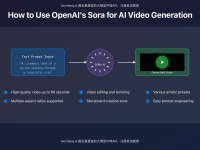
![Complete Guide to GPT-4o Image API: Integration, Pricing & Best Practices [2025]](https://pinzhanghao.com/wp-content/uploads/2025/04/001_cover-127-200x150.png)

